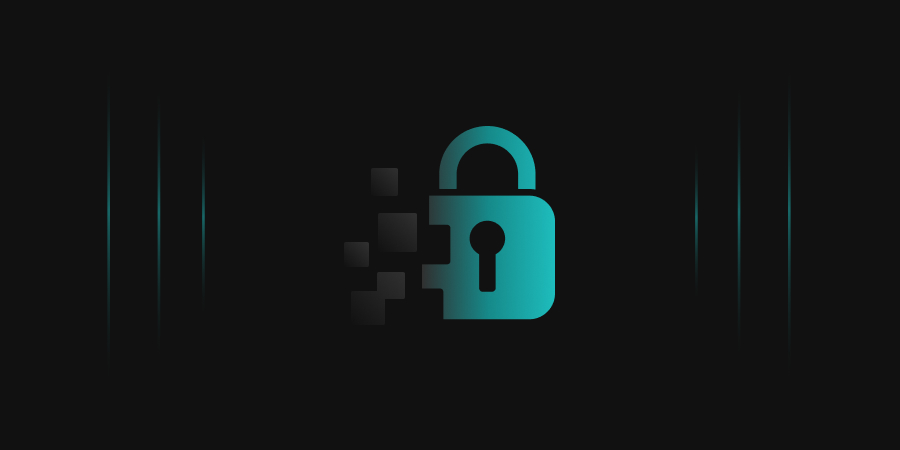Data breaches expose data of millions and such breaches can happen because of misconfigured security settings or vulnerabilities present in an application. As the digital world continues to grow more and more every day, with a number of software being developed, security has become a concern for everyone.
It is more important than ever to implement strong security practices at each stage of software development. Developers, security professionals must collab to protect applications from vulnerabilities and ensure the confidentiality, integrity, and availability of sensitive data.
Secure Code Signing is a process of digitally signing to prove its authenticity and integrity. It is a critical component that aligns with the principles of DevSecOps. We will further discuss about how integrating these two together can be an essential part of software development.
Benefits of Code-Signing
Secure Code Signing process appears as a strong defence against security risks. At its core, code signing involves digitally signing software artifacts (such as executables, libraries, and scripts) to verify their authenticity and integrity.
The Signing process involves developers using a private key to sign their code. The signature is embedded within the software artifact and can be further verified using the corresponding public key by the end users.
Let’s go through why exactly is Code Signing a powerful tool:
-
Verification and Trust
Private Key which is used to sign software artifacts generates signature which can be verified by the Public Key of the key pair. Doing so, end-users can form a trust that the software comes from a legitimate source and hasn’t been maliciously tampered. For example, while downloading software one is unlikely to download it from unknown source but if it’s from official site and signed by app developers, people will trust the app.
-
Integrity and Non-repudiation
Any tampering or unauthorized modification are detectable. No one can deny their involvement in the signed software artifacts. Code signing acts like a digital seal for your artifacts. The signature added acts like a receipt. Users can hence know that they’re getting exactly what developers were intending to give.
-
Authentication
Users can confidently install signed software, knowing it hasn’t been tampered with and need not worry about downloading malware onto their computer or mobile device. Sometimes we get a warning when trying to install software from outside the official site. With code signing, we can be ensure that whatever we are trying to get is exactly what we get. We can be confident that it hasn’t been replaced by something malicious and we get authentic sotware.
DevSecOps: A shift in software development
DevSecOps stands for development, security, and operations. It is a way of moving ahead with development where everyone involved in building software collaborates to ensure the software is secure from the start.
By establishing a culture of shared responsibility among the development, operations, and security teams, integration of security practices creates a strong defense against various threats and vulnerabilities and reduces risks and potential of security mishaps.
This highlights that security is not a secondary concern but an important part that influences all decisions and actions made during the development lifecycle.
A traditional method of developing software is usually designing the software and building it as fast as possible. Once it’s build security professionals test it for vulnerabilities and inspect it for weaknesses. Once done one might have to rebuild section to fix vulnerabilities and process goes back and forth slowing the software delivery.
With DevSecOps, the development is collaborative. It starts with everyone agreeing on a secure architecture and as each sections is built it is tested by automated security tools for it’s stability and issues can be addressed right away. As the development proceeds, and problems get caught early software delivery is faster and secure.
Alignment of Code-Signing with DevSecOps
DevSecOps integrates security throughout development. Code-Signing which helps in verifying the software’s authenticity and integrity aligns perfectly with DevSecOps. It is like a final handshake confirming a trusted build.
-
Shift Left
Devsecops focus on integration of security practices since the early stage- shifting security leftward in the development process; i.e., early in the development lifecycle. This approach focuses on detecting and mitigating vulnerabilities and soon as possible, hence minimizing potential security issues.
Secure code signing process perfectly fits into this process as developers can sign their code during the development which ensures that security isn’t an afterthought and each artifact is authenticated. This establishes a strong foundation for security.
-
CI/CD
DevSecOps relies on automated pipelines for testing, deployment, and monitoring throughout the software development cycle. Securely signed artifacts flow effortlessly through these automated pipelines, maintaining their integrity and security posture at every stage. The signing process itself can be automated within the build pipeline, seamlessly adding security to development workflow.
-
Collaboration and Shared Responsibility
DevSecOps bridges the gap between development, security, and operations teams. Code signing becomes a shared responsibility, reinforcing trust and accountability. Throughout the development phases, developers, security personnel, and operational staff collaborate to utilize secure coding techniques, follow code signing guidelines, and ensure the integrity of code artifacts.
Ultimately, this cooperative effort strengthens responsibility, transparency, and trust within the company, strengthening its security posture.
-
Risk Management and Threat Modeling
This plays a pivotal role in DevSecOps, allowing organizations to actively identify risks and vulnerabilities. Secure code signing mitigates risks related to unauthorized code changes or compromised components. This protects against threats such as code tampering or compromised components. By digitally signing code artifacts, organizations can establish a secure chain of trust, validating the authenticity and integrity of the code throughout its lifecycle.
Why Integrate Secure Code Signing into DevSecOps?
By integrating code-signing into DevSecOps, organizations can automate security checks, foster collaboration between developers and security team and enable continuous improvement throughout the development lifecycle ultimately leading to secure and reliable software.
-
Immutable Artifacts
Signed artifacts remain unchanged throughout the pipeline. Any unauthorized modification would break the signature, preventing malicious code from reaching production. For example, a signed artifact is a docker image.
Any modification after signing will invalidate the signature. During deployment the signature can be verified to ensure only unaltered, trusted code reaches production.
-
Supply Chain Security
Code signing verifies the integrity of third-party libraries and dependencies. DevSecOps mandates secure supply chain practices. Signed components reduce the risk of supply chain attacks. Let’s say a development team uses a signed third-party library. A signature can verify the library’s authenticity and integrity from a verified publisher.
This helps mitigate the risks of malware being unintentionally introduced through dependencies. DevSecOps team can establish policies requiring signed libraries creating a more secure software supply chain.
-
Compliance and Auditing
Secure code signing provides an audit trail. DevSecOps embraces transparency and accountability. Signed artifacts facilitate compliance with regulatory requirements. For example, a company needs to comply with a certain set regulation that mandates data security. Signed code provides audit that can show the software hasn’t been tampered with.
-
Threat Detection and Incident Response
Code signing helps detect anomalies. DevSecOps continuously monitors for security incidents. Signed code aids in incident response and forensics. Anomaly detection tool can be integrated with the code signing process.
If a signature is broken in a production environment, it will indicate a potential tampering attempt. This can trigger incident response policies allowing team to investigate and take corrective actions quickly.
-
Automation
Code Signing process can be automated using DevSecOps. The development pipeline can use a tool that automatically signs code during the build process. This can eliminate the need for manual signing of application, saving developers time and reducing overall human error. The tool can integrate seamlessly with existing DevOps tool like CI/CD pipelines.
Best Practices for Secure CodeSigning in DevSecOps
-
Key Management
Make sure you have strong key management procedures in place to protect the private keys used for code signing. Private keys should be kept safe and restricted to authorized individuals only.
To guard against unwanted access or improper use of signing keys, implement access controls and encryption. “Security is a chain, only as strong as it’s weakest link.” Secure key management where encryption keys are securely stores and accessed is crucial for protecting signed code.
-
Timestamping
Add timestamps to code signing to avoid certificate expiration-related problems. Timestamping offers long-term assurance of code authenticity and integrity by ensuring that signed code is still valid even after signing certificates expire. With timestamping signed code can be verified even if signing key is compromised later.
-
Certificate Revocation
Develop procedures for quickly revoking signing certificates that have been hacked. Organizations need to have procedures in place for revocation of compromised certificates and replacement with new ones in the case of a security breach or suspected compromise of signing keys.
This lessens the possibility that fraudulent operators will sign malicious software using compromised certificates. “The security of any system relies on the integrity of its components”. Timely certificate revocation prevents unauthorized entities from using compromised certificates for signing.
-
Policy Enforcement
Establish detailed rules and regulations for code signing procedures, then systematically implement them throughout the development and deployment process. Give specific instructions for code signing, including necessary signatures, approved certificate authorities, and validation criteria.
Make sure all code artifacts follow specified security requirements by enforcing policy compliance through automated checks and audits. “Policy is what guides an organization’s security efforts.” Policy enforcement makes sure of consistent signing practices reducing human error.
-
Automation Signing
Sign code using automated tools and procedures at the development and deployment stages. By lowering the possibility of human error and guaranteeing that all code artifacts are consistently signed with the proper cryptographic keys, automation can speed up the signing process. Security is not a magic it’s a systematic approach. Automating Signing with DevSecOps streamlines the process and reduces human error.
Code Signing with Encryption Consulting
Encryption Consulting’s Code Signing solution is secure and seamless. CodeSignSecure can integrate with various DevOps CI/CD pipelines, such as Jenkins, GitHub Action, Azure etc. to create an automated signing process. This is where DevSecOps comes into play with our code-sign secure.
Our solution can help ensure the software’s authenticity and guard against malware from the early development stage by signing builds as you go. You can centrally manage private keys, define strict policies, monitor usage, and delegate signing responsibilities for robust code-signing practices Encryption Consulting’s Code Sign Secure platform provides unmatched security with high performance for all your software code-signing cryptographic needs.
For effective signing, seamless integration with CI/CD workflows and build pipelines is required. This includes easy management of key cycles, encryption policies, and key lengths, compatible with popular platforms like Jenkins, GitHub Actions, and Azure DevOps, enhancing developer productivity and user admin control.
Conclusion
Secure code signing is more than a cryptographic exercise; it’s a fundamental practice that aligns seamlessly with DevSecOps. Secure code signing isn’t just about protecting your code—it’s about safeguarding your entire software ecosystem.
By integrating code signing into your DevSecOps pipeline, you enhance security, reduce risks, and build trust with your users. DevSecOps practice integrates security throughout the development process, and code signing aligns perfectly with this.
Automated security checks, enhanced collaboration, and continuous improvement, all can overall free developers from manual tasks and streamline the workflow, foster trust, and identify and fix vulnerabilities early.
Remember, secure code signing isn’t just about protecting your code—it’s about safeguarding your entire software ecosystem. To know more about our service, reach out to us at info@encryptionconsulting.com




